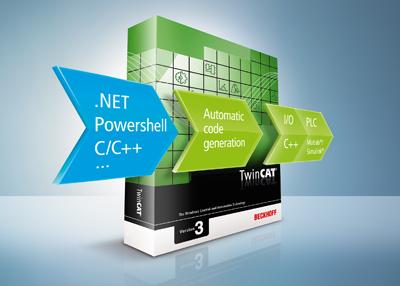
The new Automation Interface in TwinCAT3 automation software from Beckhoff enables remote control of TwinCAT engineering systems and the automatic generation of programs and configurations. Depending on the degree of automation, manual processing of control projects and the associated errors can be reduced or eliminated. The quality of the software engineering is increased while programming time and costs are reduced by the automation of project generation.
It's no secret that the automation of machines and plants is becoming increasingly complex and time-consuming. The resulting engineering costs are also growing in proportion to the complexity of the project, which is reflected by the increased costs for developing configurations and programming the PLC. These costs can only be reduced if the complete programming of the software or parts of it can be automated. Such automated code generation can also contribute toward reducing errors in the configuration.
Enabling remote access and control is another key area where the TwinCAT Automation Interface increases efficiency, it provides the user with a programming interface that can be used for remote control of the TwinCAT system. This enables the external control of almost all offline and online functions. The error-prone and (in terms of personnel) cost-intensive generation of I/O configurations and programs can be simplified in this way.
The Automation Interface consists of a large number of programming routines that are available to the user within the Automation Interface API in the form of classes and methods. These enable TwinCAT projects to be generated, changed and saved in a standard and flexible manner – in conjunction with a source code database such as Team Foundation Server, if desired. The resulting application possibilities are extremely varied and can range from a simple application for automating common and recurring TwinCAT tasks up to complex, user-defined engineering tools that only use the regular TwinCAT development environment in the background.
A further user scenario where the Automation Interface can provide valuable assistance is for environments in which the TwinCAT configurations on a machine must be changed several times a day, because a different PLC program must be executed, for example. An application can thus be tailored precisely to the user's workflow via the Automation Interface. It also provides machine operators who are not proficient in using TwinCAT with the possibility to change configurations at the simple push of a button.
The integration of the TwinCAT engineering system into the Microsoft Visual Studio developer's environment opens up a multitude of further application possibilities for the Automation Interface. This is because the openness of Visual Studio and TwinCAT enables programmers to write their own plug-ins in addition to providing direct integration into the development environment, and ultimately into the daily work routine.
